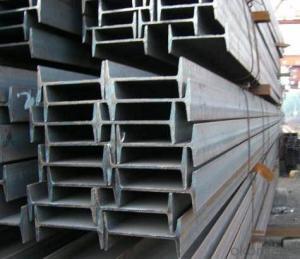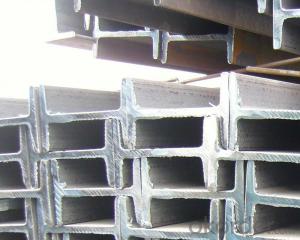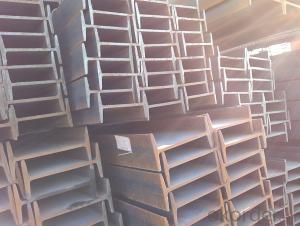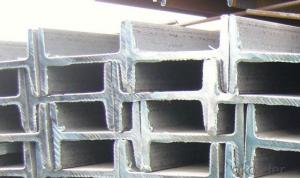European Standard IPE200 with High Quality
- Loading Port:
- Tianjin
- Payment Terms:
- TT or LC
- Min Order Qty:
- 50 m.t
- Supply Capability:
- 15000 m.t/month
OKorder Service Pledge
OKorder Financial Service
You Might Also Like
Product Description of European Standard IPE200 with High Quality:
Specifications of European Standard IPE200 with High Quality:
1.Standard: EN10025
2.Material: S235JR or Equivalent
3.Length: 6m, 12m
4.Size:
Size (mm) | Mass (kg/m) |
| 200*100*5.6 | 22.4 |
Usage & Applications of European Standard IPE200 with High Quality:
Commercial building structure;
Pre-engineered buildings;
Machinery support structures;
Prefabricated structure;
Medium scale bridges.
Packaging & Delivery of European Standard IPE200 with High Quality:
1. Transportation: the goods are delivered by truck from mill to loading port, the maximum quantity can be loaded is around 40MTs by each truck. If the order quantity cannot reach the full truck loaded, the transportation cost per ton will be little higher than full load.
2. With bundles and load in 20 feet/40 feet container, or by bulk cargo, also we could do as customer's request.
3. Marks:
Color mark: There will be color marking on both end of the bundle for the cargo delivered by bulk vessel. That makes it easily to distinguish at the destination port.
Tag mark: There will be tag mark tied up on the bundles. The information usually including supplier logo and name, product name, made in China, shipping marks and other information request by the customer.
If loading by container the marking is not needed, but we will prepare it as customer's request.
FAQ:
Q1: Why buy Materials & Equipment from OKorder.com?
A1: All products offered byOKorder.com are carefully selected from China's most reliable manufacturing enterprises. Through its ISO certifications, OKorder.com adheres to the highest standards and a commitment to supply chain safety and customer satisfaction.
Q2: How do we guarantee the quality of our products?
A2: We have established an advanced quality management system which conducts strict quality tests at every step, from raw materials to the final product. At the same time, we provide extensive follow-up service assurances as required.
Q3: How soon can we receive the product after purchase?
A3: When we receive the advance payment or original LC, we will arrange production. The shipping date is dependent upon the quatity, how many sizes you want and the plan of production, but is typically 1 month to 2 month days from the beginning of production.
Images of European Standard IPE200 with High Quality:
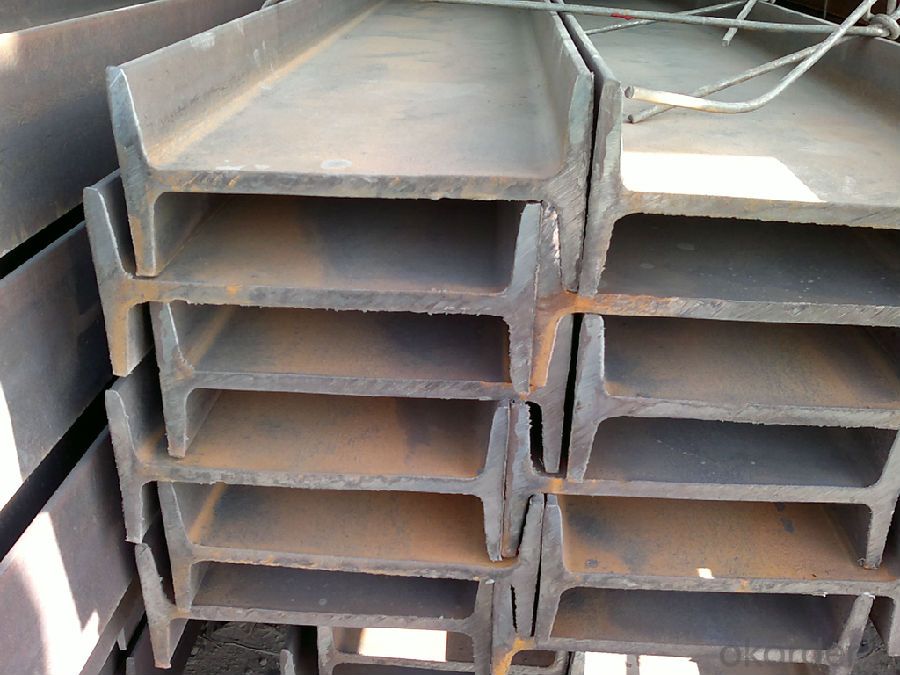
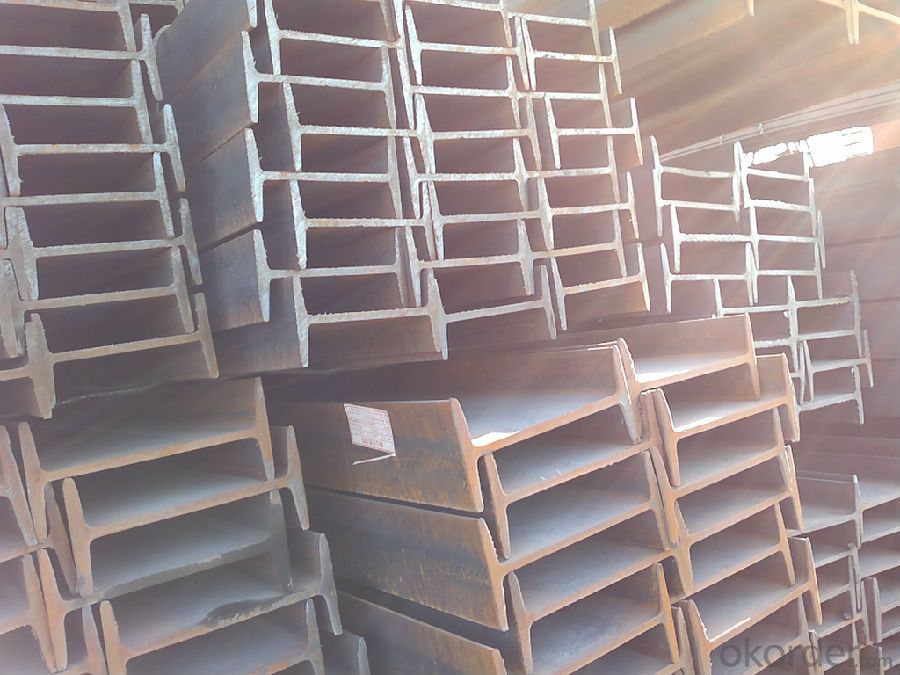
*If you would like to get our price, please inform us the size, standard/material and quantity. Thank you very much for your attention.
- Q:Can steel I-beams be used for curtain walls?
- No, steel I-beams cannot be used for curtain walls. Curtain walls are typically made from aluminum or glass, as they need to be lightweight and provide transparency. Steel I-beams are heavy and lack the necessary properties to support the weight of glass panels while maintaining structural integrity. Additionally, steel I-beams do not offer the aesthetic appeal and design flexibility required for curtain walls.
- Q:Are there any building codes or regulations related to Steel I-Beams?
- Yes, there are building codes and regulations that pertain to the use of steel I-beams in construction. These codes and regulations are typically set by local governments or national standards organizations, such as the International Building Code (IBC) in the United States. Building codes and regulations related to steel I-beams typically address various aspects such as the design, fabrication, installation, and inspection of these structural components. They ensure that the use of steel I-beams meets minimum safety requirements and helps maintain the structural integrity of buildings. Key areas covered by these codes and regulations include the allowable stress levels for steel, the required dimensions and specifications for I-beams, the proper connections and fastening methods, as well as fire protection requirements for steel structures. The codes may also include provisions for seismic design and wind loads, depending on the location and specific requirements of the project. In addition to the general building codes, there may be specialized codes and regulations that apply to specific applications of steel I-beams, such as in high-rise buildings or industrial structures. These codes may provide additional guidelines and requirements to ensure the safety and stability of the structure. It is crucial for architects, engineers, and contractors to be familiar with the applicable building codes and regulations related to steel I-beams. Compliance with these codes not only ensures the safety of the building occupants but also helps in obtaining necessary permits and approvals from the relevant authorities. Therefore, it is essential to consult with local building officials and professionals experienced in structural design to ensure compliance with all applicable codes and regulations for the use of steel I-beams in construction projects.
- Q:What are the different types of steel I-beam connections for lateral stability?
- Lateral stability can be achieved in steel construction through various types of connections for steel I-beams. Some commonly used options are as follows: 1. Welded connections: This type of connection is extensively employed in steel construction. It involves welding the flanges and webs of two I-beams together to establish a strong and rigid connection. Welded connections offer exceptional lateral stability and are commonly utilized in critical structures like high-rise buildings. 2. Bolted connections: By using bolts and nuts, two I-beams can be connected through bolted connections. This type of connection is preferred when the I-beams require easy disassembly or adjustment. Proper design and installation of bolted connections can ensure good lateral stability. 3. Moment connections: Designed to transfer both axial and bending forces between two I-beams, moment connections are more intricate and expensive compared to other connection types. However, they offer excellent lateral stability and are commonly utilized in structures that anticipate significant loads or bending moments. 4. Shear connections: Shear connections facilitate the transfer of shear forces between two I-beams. Typically created using bolts or welds, these connections are relatively straightforward to design and install. When combined with other connection types, shear connections can provide reliable lateral stability. 5. Gusset plate connections: Gusset plate connections involve the use of a plate to connect two I-beams. The plate is commonly welded or bolted to the flanges and webs of the I-beams, enhancing lateral stability. Gusset plate connections are often employed when other connection types are impractical or unfeasible. In conclusion, the selection of a suitable steel I-beam connection for lateral stability depends on various factors, including structural requirements, load conditions, design limitations, and cost considerations. A thorough evaluation of these factors and consultation with a structural engineer is crucial in determining the most appropriate connection type for a specific project.
- Q:How do you calculate the maximum bending moment for a steel I-beam?
- To calculate the maximum bending moment for a steel I-beam, you need to consider the load applied to the beam and its span length. The bending moment is a measure of the internal force experienced by the beam when subjected to a load that creates a bending effect. First, determine the load applied to the beam. This could be a uniformly distributed load, a point load, or a combination of both. For example, if you have a uniformly distributed load of 10 kN/m over a span length of 5 meters, the total load would be 10 kN/m * 5 m = 50 kN. Next, calculate the reactions at the supports. These reactions will depend on the type of support and the load distribution. For example, if the beam is simply supported at both ends and subjected to a uniformly distributed load, each support would have a reaction of 25 kN. Once you have the reactions, you can determine the location and magnitude of the maximum bending moment. This occurs at the location where the shear force changes sign or reaches its maximum value. The bending moment at this point is calculated using the formula M = F * d, where M is the bending moment, F is the shear force, and d is the perpendicular distance from the point of interest to the point where the bending moment is being calculated. For example, if the shear force at the support is 25 kN, and the distance from the support to the point where the bending moment is being calculated is 2 meters, the maximum bending moment would be 25 kN * 2 m = 50 kNm. It is important to note that these calculations assume the beam is elastic and follows the linear elastic theory. If the beam is subjected to excessive loads, it may experience plastic deformation, which requires additional considerations and calculations. Additionally, the structural properties of the steel I-beam, such as its moment of inertia, cross-sectional dimensions, and material properties, also play a crucial role in determining the maximum bending moment.
- Q:Can steel I-beams be used for pedestrian bridges over rivers or canals?
- Yes, steel I-beams can be used for pedestrian bridges over rivers or canals. Steel I-beams are commonly used in bridge construction due to their strength, durability, and versatility. They are capable of spanning long distances and can support heavy loads, making them suitable for pedestrian bridges that need to safely accommodate foot traffic. Additionally, steel I-beams can resist the corrosive effects of water and weather, which is essential for bridges built over rivers or canals. These beams can be designed and fabricated to meet the specific requirements of the bridge, ensuring that it can withstand the necessary loads and provide a safe crossing for pedestrians.
- Q:The difference between I-beam i40a and i40b
- The two weights differ. I40a weighs 67.6kg per metre; i40b weighs 73.9kg per meter.I-beam is also called steel girder (UniversalBeam). It is a strip of steel with an I-shaped section. I-beam is made of ordinary I-beam and light i-beam. It is a section steel whose shape is trough.
- Q:Are steel I-beams compatible with other building materials?
- Yes, steel I-beams are compatible with other building materials. They are commonly used in construction projects to provide structural support and can be easily integrated with various materials such as concrete, wood, and brick to create a robust and versatile building framework.
- Q:How do steel I-beams perform in long-span structures?
- Steel I-beams are commonly used in long-span structures due to their excellent performance. These beams have a high strength-to-weight ratio, which allows them to support heavy loads over long distances without excessive deflection or bending. The I-beam's design, with a flange on either side of the web, provides increased stability and resistance to torsional forces. This makes them well-suited for long-span structures where stability and load-bearing capacity are essential. Additionally, steel I-beams are highly durable and resistant to corrosion. This makes them suitable for long-span structures exposed to harsh environmental conditions, such as bridges or industrial facilities. Furthermore, steel I-beams can be easily fabricated and assembled, allowing for efficient construction processes in long-span structures. Their versatility and availability in various sizes and shapes make them adaptable to different design requirements. In summary, steel I-beams perform exceptionally well in long-span structures. They offer high strength, stability, and load-bearing capacity while being durable and easy to construct. These qualities make them a popular choice for architects and engineers when designing structures that require support over extended distances.
- Q:Excuse me: how to use the steel joist to build the attic and the I-beam to go deep into the load-bearing wall. How many centimeters? Do we need to weld the main reinforcement?
- Reinforced concrete cast-in-place. Reinforced cement belongs to the practice of civil procedure, but there are additional conditions, there is the original wall plate is connected with the interface structure of steel bar or other fasteners, otherwise the weight of reinforced concrete is not generally a support or fixing piece can be fixed, maybe there will be a security threat. The advantages of reinforced concrete floor is when people walk on it, generally do not shake what sense, nor what sound (unless the floor is very thin, the disadvantage is that the cement floor) is very time-consuming, pouring good, pure maintenance time will be more than a month, the construction time and in front of the 2 months.
- Q:Can steel I-beams be used in the construction of convention centers?
- Certainly, convention centers can employ steel I-beams in their construction. The utilization of steel I-beams is widespread in the field of construction owing to their remarkable strength, durability, and adaptability. These beams offer exceptional support and load-bearing capacities, rendering them superb for erecting extensive edifices such as convention centers. They can be employed for framing, supports, and columns, thereby contributing to the establishment of a resilient and secure structure. Moreover, steel constitutes a sustainable and eco-friendly material, thereby increasing its popularity in contemporary construction endeavors.
1. Manufacturer Overview |
|
|---|---|
| Location | |
| Year Established | |
| Annual Output Value | |
| Main Markets | |
| Company Certifications | |
2. Manufacturer Certificates |
|
|---|---|
| a) Certification Name | |
| Range | |
| Reference | |
| Validity Period | |
3. Manufacturer Capability |
|
|---|---|
| a)Trade Capacity | |
| Nearest Port | |
| Export Percentage | |
| No.of Employees in Trade Department | |
| Language Spoken: | |
| b)Factory Information | |
| Factory Size: | |
| No. of Production Lines | |
| Contract Manufacturing | |
| Product Price Range | |
Send your message to us
European Standard IPE200 with High Quality
- Loading Port:
- Tianjin
- Payment Terms:
- TT or LC
- Min Order Qty:
- 50 m.t
- Supply Capability:
- 15000 m.t/month
OKorder Service Pledge
OKorder Financial Service
Similar products
New products
Hot products
Related keywords
